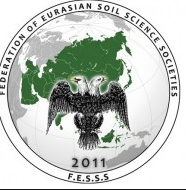Location
The Federation of Eurasian Soil Science Societies was established by the collaboration of Soil Science Societies of four different countries which are Turkey, Russia, Azerbaijan and Kazakhstan in 2012. After 2016, Romania and Kyrgyzstan Soil Science Societies joined to FESSS. The primary goal of the Federation is to share knowledge on the most dynamic part of earth-soils and to "bridge the gap" between soil science, policy making, and public knowledge both nationally and internationally in the region. As a finite resource, the soils of this region are under pressure from many human induced activities for many centuries. Therefore, the Federation aims to develop strategies to form a fertile collaboration securing regions' soils from threads such as soil degradation; erosion; pollution and many others. In order to form a base for the collaboration, we decided to publish an International journal (Eurasian Journal of Soil Science) to incite communication between soil scientists working in the region. The Journal is intended to have an impulsion impact raising eagerness among soil scientists to effectively communicate and consistently share the experience and data with each other. I believe that this Journal will lead us (as soil scientists) to conceive political, economical, and anthropogenic aspects and issues of soils in the region. I am contented to see that our collaboration under the Federation of Eurasian Soil Science Societies has eventuated in this promising Journal. This journal will be the vibrant voice of the regions' soil scientists. We all accredit that the Journal will breed and conduce a lasting interest, collaboration and appreciation among us and that you will find it enlightening and inspiring.
Dr.Sergei SHOBA
President
Members:
Resources
Displaying 1 - 2 of 2Effects of soil types and land use - land cover on soil organic carbon density at Madendere watershed
Identifying the primary factors influencing watershed scale soil organic carbon (SOC) spatial distribution is critical for improving the accuracy of SOC stock estimates. The primary objective of the current study is to determine the effects of soil type and land use-land cover on SOC in Maden Dere Watershed. To determine land use and land cover of the study area, Geoeye satellite image was used. Four main land use and land cover that are forest, pasture, orchard and cultivated land were determined.
Potential land use planning and assessment in the west part of the Büyük Menderes basin by ILSEN Model
This research was planned to investigate the structural properties and soil mapping capability according to rules of the 7. Approximation Soil Taxonomic System of the region western part of the Büyük Menderes Basin by using Landsat satellite images in remote sensing technique. The data gathered from field observation about some soil properties and land requirements of different land use types were correlated and as a result of that the boundaries of land use patterns were carried out.


